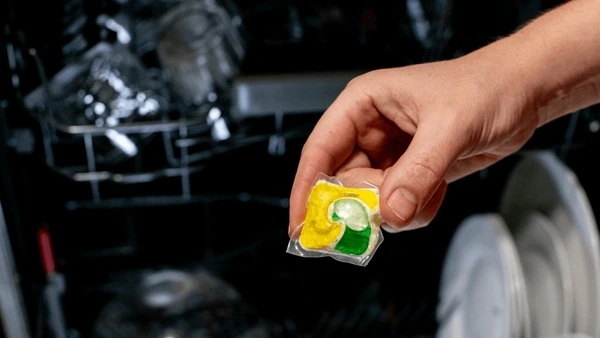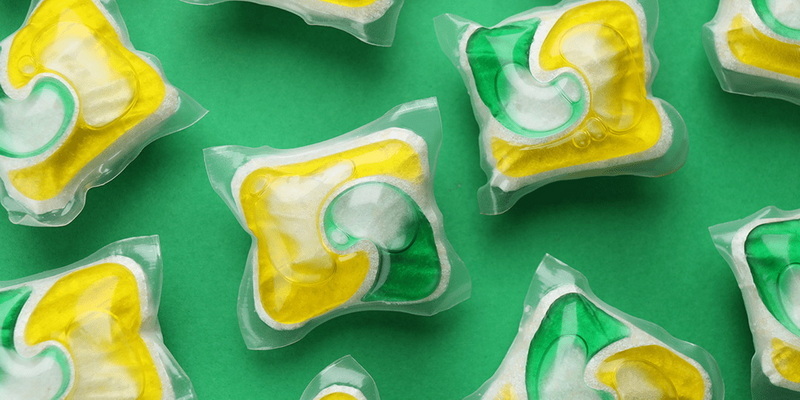Dongguan UFine Daily Chemical Co.,Ltd.
- All
- Product Name
- Product Keyword
- Product Model
- Product Summary
- Product Description
- Multi Field Search
Views: 222 Author: Tomorrow Publish Time: 10-28-2025 Origin: Site











Content Menu
● Understanding dishwasher filtration systems
● What Cascade Pods are designed to do
● What can cause clogging when using pods
● Common signs of filtration problems
● Assessing the impact of Cascade Pods on filters
● Best practices to minimize clogging
● Maintenance and cleaning routines
● Choosing the right detergent and settings
● When to seek professional help
● FAQ
>> Q1: How often should I clean my dishwasher filter when using Cascade Pods?
>> Q2: Can Cascade Pods cause clogs in hard water environments?
>> Q3: What should I do if I see standing water after a cycle while using Cascade Pods?
>> Q4: Are there signs that a dishwasher filter needs replacement when using pods?
>> Q5: Is it better to run longer cycles when using Cascade Pods?
Dishwashers are designed to handle daily grime and grease, but improper use of detergent can lead to performance issues. Cascade Pods are popular for their convenience and cleaning power, yet some users report that these pods may contribute to clogged filters in certain situations. This article explores how Cascade Pods interact with dishwasher filtration systems, what causes clogs, signs to watch for, and practical steps to prevent or remedy clogged filters. By understanding the mechanics of a typical dishwasher and the role of detergent, you can keep your appliance running efficiently and extend its lifespan. This extended analysis adds depth on installation considerations, common misconceptions, and science-backed cleaning routines to help you troubleshoot effectively.

Most standard residential dishwashers use a filtration system to trap food particles and debris, preventing them from redepositing on dishes and from circulating through the spray arms. Filtration typically includes:
- A coarse filter that catches larger particles.
- A fine filter or sump screen that traps smaller particles.
- A chopper or disposer blade in some models to break down tougher debris.
- A sump and pump assembly that circulates water during cycles.
These components rely on the water being clean enough to move freely through the filtration path. When debris accumulates or the filtration pathway becomes blocked, performance decreases, and you may notice standing water, poor cleaning results, or unusual noises. Some advanced models fuse filters with sensors that alert you when cleaning efficiency drops or when the filter needs cleaning. If your dishwasher displays an error code related to the filtration system, consult the manual before attempting fixes.
Cascade Pods are a form of concentrated detergent designed to dissolve in water and release cleaning agents during the wash cycle. They are formulated to handle typical food residues and grease found on everyday dishware. The pods' design aims to simplify dosing and reduce traditional powder or liquid residue left in the dishwasher.
Key factors that influence pod performance include:
- Water hardness: Hard water can interact with detergents and affect suds and cleaning efficiency.
- Water temperature: Proper dissolution of the pod requires sufficient heat.
- Cycle selection: Longer or heavier-duty cycles may improve cleaning for stubborn residue.
- Pre-rinsing: Excessive pre-rinsing can reduce the pod's effectiveness.
- Load size and arrangement: Overloading can prevent proper water circulation, affecting dissolution and distribution.
Pod formulations can vary by manufacturer, with some incorporating anti-spot or shine-enhancing additives, and others focusing on eco-friendly or phosphate-free chemistry. While the overall cleaning power is robust, certain combinations of hard water minerals and organic residues can interact with detergents to form films near filtration surfaces if maintenance is neglected.
Although Cascade Pods are engineered for compatibility with most dishwashers, certain conditions can contribute to filter or pump clogs:
- Large food particles escaping to the filter due to insufficient pre-rinsing or improper scraping.
- Broken or degraded filters allowing larger debris to pass through to the sump.
- Detergent residue combining with minerals in hard water to form deposits near filters.
- Soap scum and gelatinous residues from certain foods or sauces that accumulate in the filter over time.
- Frequent use of low-temperature or short-cycle programs that do not allow full dissolution and proper flushing of debris.
- A malfunctioning spray arm or circulation pump that leaves more debris in the sump.
- Over-accumulation of grease from fried foods, which can form a sticky layer that traps particles and reduces water flow.
- Debris from silicone bakeware, plastic wrap fragments, or small utensil pieces that escape the filter and lodge in the pump.
- Standing water at the bottom after a cycle.
- Dishes that aren't fully clean or have residue.
- Unusual noises during operation, such as grinding or humming.
- Frequent need to manually clean filters or the sump screen.
- Bad odor coming from the dishwasher after cycles.
- Slower draining and reduced water circulation during wash cycles.
- Increased cycle times without corresponding improvements in cleaning.

Cascade Pods themselves are not inherently clogging agents; they are detergents designed to dissolve and produce cleaning agents. However, the interaction between any detergent and the machine's filtration system can vary based on usage patterns and machine condition:
- Inadequate maintenance of filters can amplify any minor detritus, making clogs more noticeable.
- Residue from detergents, when combined with mineral deposits (limescale) in hard water, can build up on filters and near the sump.
- If the pod does not fully dissolve due to low water temperatures or short cycles, it can leave residual materials that contribute to buildup.
- Some users report that certain pod formulations can leave a slimy film on filters if the rinse cycle is insufficient to flush away dissolved contents.
- Age of the detergent dispenser and seals can also influence how well pods release and how residues are flushed.
- Scrape or rinse dishes before loading to minimize large food particles entering the filter.
- Use the appropriate cycle for the load size and soil level to ensure adequate washing and rinsing times.
- Run hot washes when possible to promote complete pod dissolution.
- Regularly inspect and clean filters, sump, and spray arms according to the manufacturer's guidelines.
- Consider a dishwasher with a robust filtration system or a built-in descaler if you have hard water.
- If you notice persistent clogging, run an empty hot cycle with a dishwasher cleaner to remove mineral buildup.
- Avoid using multiple pods in a single cycle unless the manufacturer specifically endorses this practice.
- Check for compatibility between Cascade Pods and your dishwasher model; some models with ultra-tight tolerances may respond differently to certain pod designs.
- Weekly: Remove and rinse the filter assembly, scrubbing away any trapped debris.
- Monthly: Inspect the spray arms for blockages and clear any holes with a thin tool or toothpick.
- Quarterly: Run a cleaning cycle with a dishwasher cleaner to combat mineral deposits and soap scum.
- Semi-annually: Inspect the door gasket and seals for soap residue buildup that could trap moisture or soap clusters near the detergent dispenser.
- As needed: If you notice reduced drainage or unusual noises, inspect the pump and impeller for obstructions.
- Seasonal: If you rely on a water softener or have very hard water, consider a professional descaling service to prevent mineral buildup inside the filter paths.
- Verify that Cascade Pods are compatible with your dishwasher model and water hardness.
- Use the pod size appropriate for your load and soil level; do not use extra pods in a single cycle unless recommended by the manufacturer.
- Ensure the detergent is placed in the designated dispenser or used in the correct compartment according to the instruction manual.
- For hard water areas, consider a rinse aid to reduce mineral buildup and improve drying performance.
- If your dishwasher has a pre-wash cycle option, ensure it is used appropriately; some pods are designed to dissolve during the main wash, not the pre-wash.
- Consider running a maintenance wash (empty) every 1–2 months to keep interior surfaces clean and avoid buildup.
- If clogs persist after routine cleaning and using recommended cycles, a professional technician can inspect for broken filters, a malfunctioning pump, or advanced mineral buildup.
- If you notice electrical or water leaks, stop use and contact support.
- If the control panel shows error codes related to drainage, filtration, or the motor, consult the manufacturer's troubleshooting guide or call a service technician.
Cascade Pods offer a convenient cleaning option, but a clogged dishwasher filter can occur for reasons not limited to the detergent itself. Proper loading, regular maintenance of filters and spray arms, appropriate cycle selection, and attention to water hardness can significantly reduce the risk of clogging. By following best practices and performing routine maintenance, you can keep your dishwasher operating efficiently and ensure consistently clean dishes. A proactive approach—cleaning filters monthly, inspecting spray arms quarterly, and using the correct pod size for each load—helps prevent buildup that could compromise performance. Understanding how your specific model handles detergents and filtration will empower you to troubleshoot quickly and maintain optimal results over the long term.

A1: Clean the filter at least once a month, or more often if you notice reduced cleaning performance or standing water after cycles.
A2: Detergent residues can combine with minerals in hard water to form deposits near filters, but proper maintenance and use of rinse aids minimize this risk.
A3: Check and clean the filter and sump, inspect the pump and spray arms for obstructions, and run a hot water cycle to flush debris.
A4: Frequent clogs, persistent poor cleaning results despite cleaning, and visible damage to the filter indicate a replacement may be necessary.
A5: Longer cycles with adequate wash and rinse times promote complete pod dissolution and debris clearance, improving overall performance.